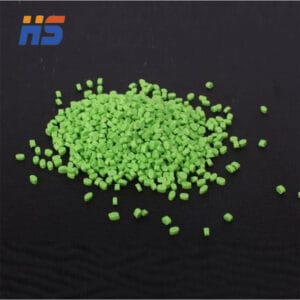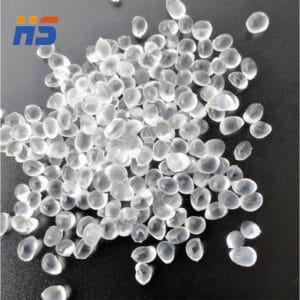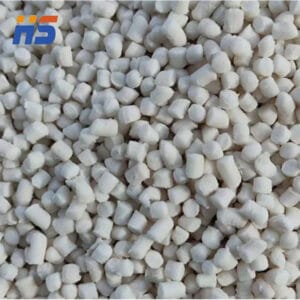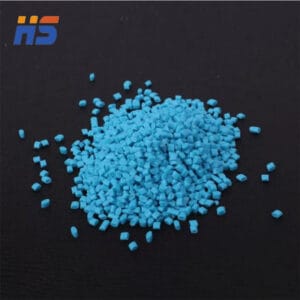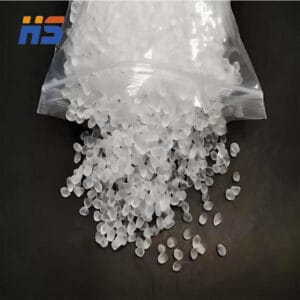-


TPR Granules, is a material that combines the properties of both rubber and plastic. It is a versatile material that can be easily processed using techniques like injection molding. TPR is known for its flexibility, durability, and resistance to chemicals and weathering
Flexibility and Elasticity:
TPR exhibits rubber-like flexibility and elasticity, making it suitable for applications requiring a material that can bend and deform without breaking.
Durability and Strength:
It offers good tensile strength, tear resistance, and resistance to fatigue, allowing it to withstand mechanical stress and long-term use.
Chemical and Weather Resistance:
TPR is resistant to many chemicals and weathering, making it suitable for outdoor and industrial applications.
Processability:
Being a thermoplastic, TPR can be melted and reshaped multiple times, allowing for efficient manufacturing processes like injection molding and extrusion.
Recyclability:
TPR can be recycled, making it a more environmentally friendly option compared to some other materials.
-


TPR Pellets or Thermoplastic Rubber, is a material that combines the properties of both rubber and plastic. It is a versatile material that can be easily processed using techniques like injection molding. TPR is known for its flexibility, durability, and resistance to chemicals and weathering
Flexibility and Elasticity:
TPR exhibits rubber-like flexibility and elasticity, making it suitable for applications requiring a material that can bend and deform without breaking.
Durability and Strength:
It offers good tensile strength, tear resistance, and resistance to fatigue, allowing it to withstand mechanical stress and long-term use.
Chemical and Weather Resistance:
TPR is resistant to many chemicals and weathering, making it suitable for outdoor and industrial applications.
Processability:
Being a thermoplastic, TPR can be melted and reshaped multiple times, allowing for efficient manufacturing processes like injection molding and extrusion.
Recyclability:
TPR can be recycled, making it a more environmentally friendly option compared to some other materials.
-


Thermoplastic Rubber, is a material that combines the properties of both rubber and plastic. It is a versatile material that can be easily processed using techniques like injection molding. TPR is known for its flexibility, durability, and resistance to chemicals and weathering
Flexibility and Elasticity:
TPR exhibits rubber-like flexibility and elasticity, making it suitable for applications requiring a material that can bend and deform without breaking.
Durability and Strength:
It offers good tensile strength, tear resistance, and resistance to fatigue, allowing it to withstand mechanical stress and long-term use.
Chemical and Weather Resistance:
TPR is resistant to many chemicals and weathering, making it suitable for outdoor and industrial applications.
Processability:
Being a thermoplastic, TPR can be melted and reshaped multiple times, allowing for efficient manufacturing processes like injection molding and extrusion.
Recyclability:
TPR can be recycled, making it a more environmentally friendly option compared to some other materials.
-


TPR Material, or Thermoplastic Rubber, is a material that combines the properties of both rubber and plastic. It is a versatile material that can be easily processed using techniques like injection molding. TPR is known for its flexibility, durability, and resistance to chemicals and weathering
Flexibility and Elasticity:
TPR exhibits rubber-like flexibility and elasticity, making it suitable for applications requiring a material that can bend and deform without breaking. Durability and Strength:
It offers good tensile strength, tear resistance, and resistance to fatigue, allowing it to withstand mechanical stress and long-term use.
Chemical and Weather Resistance:
TPR is resistant to many chemicals and weathering, making it suitable for outdoor and industrial applications.
Processability:
Being a thermoplastic, TPR can be melted and reshaped multiple times, allowing for efficient manufacturing processes like injection molding and extrusion.
Recyclability:
TPR can be recycled, making it a more environmentally friendly option compared to some other materials.
-


TPR Resin, or Thermoplastic Rubber, is a material that combines the properties of both rubber and plastic. It is a versatile material that can be easily processed using techniques like injection molding. TPR is known for its flexibility, durability, and resistance to chemicals and weathering
Flexibility and Elasticity:
TPR exhibits rubber-like flexibility and elasticity, making it suitable for applications requiring a material that can bend and deform without breaking.
Durability and Strength:
It offers good tensile strength, tear resistance, and resistance to fatigue, allowing it to withstand mechanical stress and long-term use.
Chemical and Weather Resistance:
TPR is resistant to many chemicals and weathering, making it suitable for outdoor and industrial applications.
Processability:
Being a thermoplastic, TPR can be melted and reshaped multiple times, allowing for efficient manufacturing processes like injection molding and extrusion.
Recyclability:
TPR can be recycled, making it a more environmentally friendly option compared to some other materials.

